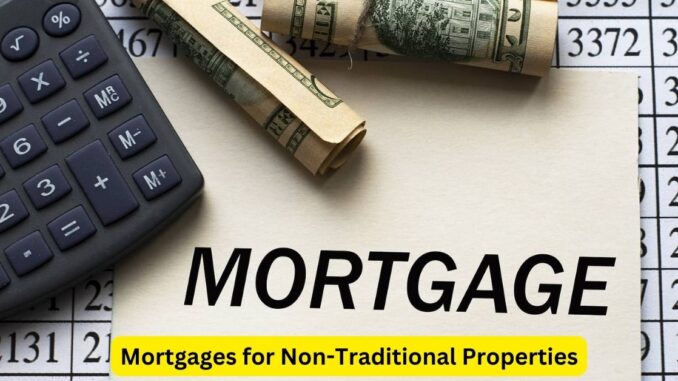
In the world of real estate, not all properties fit neatly into the conventional categories of single-family homes or condos. Some buyers are drawn to non-traditional properties like tiny houses, houseboats, geodesic domes, and even converted barns. While these unique homes offer distinct lifestyles, securing a mortgage for such properties can be a challenging endeavor. In this article, we will explore the options and considerations for obtaining mortgages for non-traditional properties.
1. Understand Your Property Type The first step in securing a mortgage for a non-traditional property is to understand the unique aspects of the property type. Lenders will assess factors such as the property’s location, size, condition, and intended use. The more information you can provide about your property, the better prepared you will be when approaching lenders.
2. Non-Conforming Loans Traditional mortgages, known as conforming loans, are designed for typical residential properties. Non-traditional properties often require non-conforming loans. These loans may have higher interest rates and stricter qualification criteria, as they pose a higher risk to lenders. Be prepared for a more extensive application process and potentially larger down payments.
3. Specialized Lenders Seek out lenders who specialize in non-traditional properties. These lenders have experience with unique properties and can provide tailored mortgage solutions. They understand the intricacies of financing unconventional homes and can guide you through the process.
4. Tiny Houses Tiny houses have gained popularity for their minimalist lifestyle. To finance a tiny house, consider personal loans, RV loans, or even construction loans. Some lenders offer specialized tiny house loans, but they may come with stricter terms.
5. Houseboats Houseboat enthusiasts can explore options like marine mortgages or personal loans. The type of financing you choose may depend on whether the houseboat is stationary or seaworthy. Marine mortgages are akin to traditional mortgages but are specifically designed for houseboats.
6. Geodesic Domes Geodesic domes offer energy efficiency and unique aesthetics. Financing options for domes can include personal loans, construction loans, or working with lenders who have experience with eco-friendly and unconventional homes.
7. Converted Barns Converted barns have their charm but can pose challenges due to their structural diversity. Seek out lenders who specialize in historic or unique properties. Renovation loans, like FHA 203(k) loans, may also be an option to consider when converting a barn into a residence.
8. Prepare for Appraisal Challenges Non-traditional properties may face appraisal difficulties. Since there might be limited comparable properties in the area, appraisers may struggle to determine the property’s value accurately. Be prepared for potential discrepancies between your purchase price and the appraised value.
9. Document Your Plans Clearly document your plans for the property. Lenders will want to know how you intend to use it, whether it’s your primary residence, a vacation home, or an investment property. A well-thought-out plan can increase your chances of approval.
10. Consult with a Real Estate Professional Working with a real estate agent or mortgage broker who specializes in non-traditional properties can be invaluable. They can connect you with the right lenders, help you navigate the complexities of unique properties, and ensure a smoother buying process.
In conclusion, securing a mortgage for a non-traditional property requires diligence, specialized knowledge, and careful planning. While it may present challenges, owning a unique home that aligns with your lifestyle and preferences can be a rewarding experience. By understanding your property type, exploring non-conforming loans, and seeking out specialized lenders and advice, you can make your dream of owning a non-traditional property a reality.
Leave a Reply